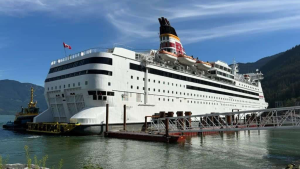The changes that have taken place in the construction industry in the last 20 years or so are breathtaking.
The changes have been driven largely by environmental concerns and energy costs, and there likely is even greater change coming as our climate warms.
Much has been written about the impact of such new technologies as robotics and 3D printing. Less has been written about the ever-more-sophisticated sensing technologies that are available.
Now, engineers in London, England are using those new technologies in what they’re calling the world’s first "smart tunnel."
The tunnel is 25 metres beneath central London. It’s called the Royal Mail tunnel, and it was used to carry mail across London from 1927 until 2003. Unused since then, it has become a unique underground laboratory for engineers from the University of Cambridge, who are monitoring movement in the tunnel structure and seeing how it changes as a gigantic new tunnel is being dug just beneath it.
The new tunnel is being built for Crossrail, a new commuter rail line across London due to open in 2018. It’s the largest civil engineering project under way in Europe and the moment, and it is relying on technology to ensure minimum impact on adjacent infrastructure as tunnelling progresses. The Crossrail tunnel is huge, with a diameter of almost 11 metres, compared with the Royal Mail tunnel’s 2.5 metres.
Robert Mair, who heads the department of civil engineering and the Centre for Smart Infrastructure and Construction at Cambridge, says that a project as big as Crossrail brings with it all sorts of engineering challenges.
One of the most important of these, he says, "is how you excavate large tunnels underneath urban infrastructure without causing any distress to buildings or other tunnels."
The two tunnels run parallel to each other for more than 100 metres, with just a few metres between them. At one point, there is a station on the London Underground above the mail tunnel, which is above a new Crossrail tunnel.
To keep track of what’s happening to the mail tunnel, hundreds of low-cost sensors have been installed in a 30-metre stretch where the tunnel is sandwiched between the Underground station above and the Crossrail station below.
The Cambridge team is using four different low-cost sensing technologies, which together can detect movements as small as one-hundredth of a millimetre, so any potential problems can be spotted and fixed well before they pose any risk to the old mail tunnel. There has been only minor movement so far, but it’s well within acceptable limits.
The sensing technologies installed are cheaper, easier to install, and consume less power compared with the technology normally used today. And it provides a complete picture of the entire tunnel, rather than just information about selected points.
Optical fibre was installed along the length of the tunnel, which shows if the tunnel is deforming or bending. Wireless devices measure displacement of one part of the tunnel relative to the next and transmit the data to a receiving station. Computer vision techniques allow the team to measure many more points than current methods and tovisualize what is happening in the tunnel.
As well, long-lasting, ultra-low-power sensors invented by a Cambridge student, have been installed throughout the tunnel to measure temperature, humidity, acceleration and tilt, and can be left in place for years without needing the battery to be changed.
In an era of tight budgets and deteriorating infrastructure in most of the western world, the monitoring methods used in the Royal Mail tunnel could enable engineers to decide whether a particular piece of infrastructure needs maintenance work or must be replaced.
Used as a decision-making tool, sensing technologies could go a long way to ensuring that we get the best possible value for our infrastructure dollars.
Korky Koroluk is an Ottawa-based freelance writer. Send comments to editor@dailycommercialnews.com.











Recent Comments
comments for this post are closed